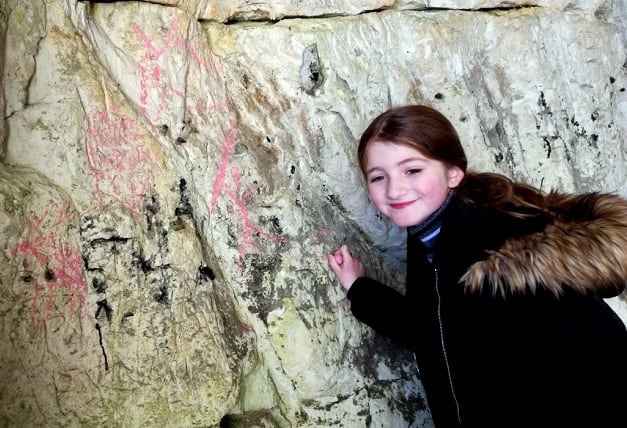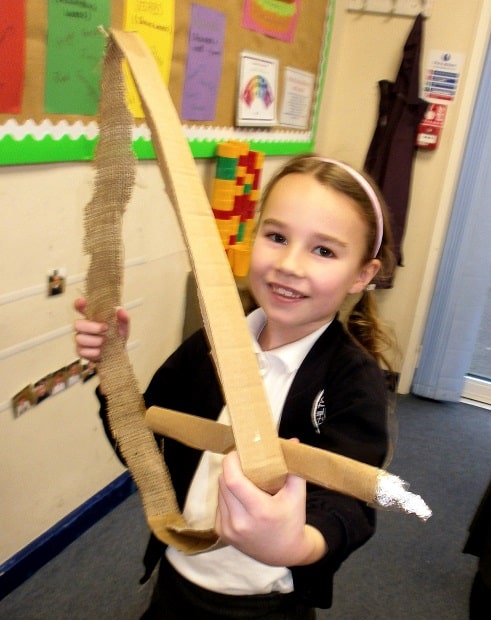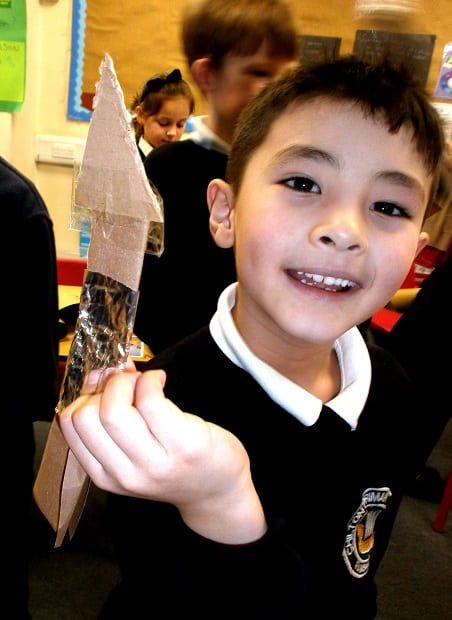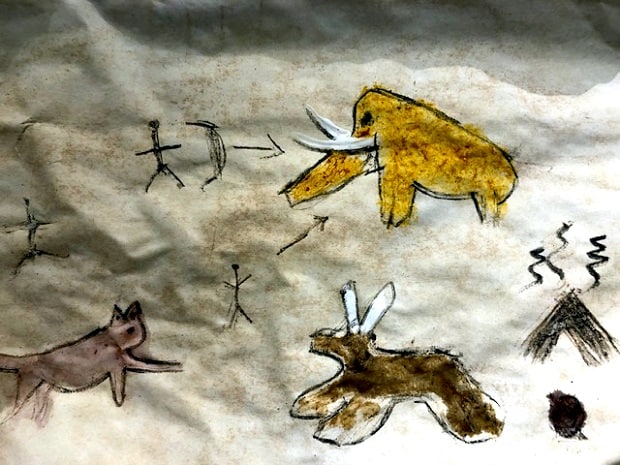
A time trip through history has seen children at Chilton Primary explore life from the Stone Age, Bronze Age and Iron Age.
The Year 3 classes have researched the three key archaeological eras and created a timeline of the prehistoric period – or when there was human life before records documented human activity – and it roughly dates from 2.5 million years ago to 1,200 BC.
They considered the differences between prehistoric and modern life and decided there favourite time in which to live – with a surprising number in class choosing the Stone Age.

They learnt about evolution and the development of humans through this period, how tools became more sophisticated, and how life changed through the eras.
Pupils working at home and in school also embarked on hunts to gather food and materials including seeds, berries, sticks and flint, as if they were true gatherers from the stone age. They also drew cave paintings, and created tools from the Bronze Age utilising a range of materials including sticks, stones, string, tin foil, and card. Creating Celtic shields was another activity.

Year 3 teacher Michaela Gale added: “Some of the children made their own paint for their cave paintings – by crushing berries and charring wood.
“They designed Stone Age to Iron Age fashion shows with their Barbie dolls and created hill forts on their Minecraft computer programmes.

“Remote learning is giving the children the chance to apply their new knowledge using things that they already love – their computer, their toys and getting out and about. Learning outside of the classroom has proven to be just as creative and fun as it is in school.”
Assistant Head Hannah Cheshire, who is Early Years and Key Stage 1 lead, said: “This is a fascinating topic to explore. The children have been on a fantastic journey through the Prehistoric era which has captured their interest. They have created some high standard interesting creative work across the curriculum, both home learners and those in school.”

